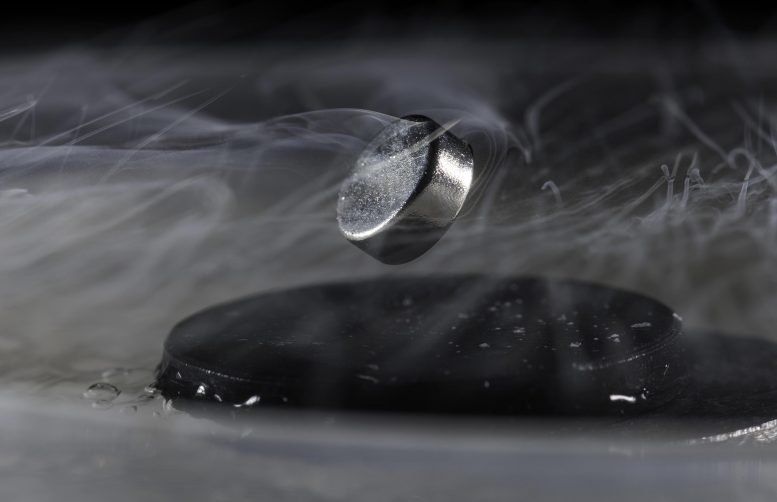
The goal of new research led by Ranga Dias, assistant professor of mechanical engineering and of physics and astronomy, is to develop superconducting materials at room temperatures. Currently, extreme cold is required to achieve superconductivity, as demonstrated in this photo from Dias’s lab, in which a magnet floats above a superconductor cooled with liquid nitrogen. Credit: University of Rochester photo / J. Adam Fenster
Compressing simple molecular solids with hydrogen at extremely high pressures, University of Rochester engineers and physicists have, for the first time, created material that is superconducting at room temperature.
Featured as the cover story in the journal Nature, the work was conducted by the lab of Ranga Dias, an assistant professor of physics and mechanical engineering.
Dias says developing materials that are superconducting — without electrical resistance and expulsion of magnetic field at room temperature — is the “holy grail” of condensed matter physics. Sought for more than a century, such materials “can definitely change the world as we know it,” Dias says.
In setting the new record, Dias and his research team combined hydrogen with carbon and sulfur to photochemically synthesize simple organic-derived carbonaceous sulfur hydride in a diamond anvil cell, a research device used to examine miniscule amounts of materials under extraordinarily high pressure.
The carbonaceous sulfur hydride exhibited superconductivity at about 58 degrees Fahrenheit (14 degrees Celsius) and a pressure of about 39 million psi. This is the first time that superconducting material has been observed at room temperature.
“Because of the limits of low temperature, materials with such extraordinary properties have not quite transformed the world in the way that many might have imagined. However, our discovery will break down these barriers and open the door to many potential applications,” says Dias, who is also affiliated with the University’s Materials Science and High Energy Density Physics programs.
Applications include:
- Power grids that transmit electricity without the loss of up to 200 million megawatt hours (MWh) of the energy that now occurs due to resistance in the wires.
- A new way to propel levitated trains and other forms of transportation.
- Medical imaging and scanning techniques such as MRI and magnetocardiography
- Faster, more efficient electronics for digital logic and memory device technology.
“We live in a semiconductor society, and with this kind of technology, you can take society into a superconducting society where you’ll never need things like batteries again,” says Ashkan Salamat of the University of Nevada Las Vegas, a coauthor of the discovery.
The amount of superconducting material created by the diamond anvil cells is measured in picoliters — about the size of a single inkjet particle.
The next challenge, Dias says, is finding ways to create the room temperature superconducting materials at lower pressures, so they will be economical to produce in greater volume. In comparison to the millions of pounds of pressure created in diamond anvil cells, the atmospheric pressure of Earth at sea level is about 15 PSI.
Why room temperature matters
First discovered in 1911, superconductivity gives materials two key properties. Electrical resistance vanishes. And any semblance of a magnetic field is expelled, due to a phenomenon called the Meissner effect. The magnetic field lines have to pass around the superconducting material, making it possible to levitate such materials, something that could be used for frictionless high-speed trains, known as maglev trains.
Powerful superconducting electromagnets are already critical components of maglev trains, magnetic resonance imaging (MRI) and nuclear magnetic resonance (NMR) machines, particle accelerators, and other advanced technologies, including early quantum supercomputers.
But the superconducting materials used in the devices usually work only at extremely low temperatures — lower than any natural temperatures on Earth. This restriction makes them costly to maintain — and too costly to extend to other potential applications. “The cost to keep these materials at cryogenic temperatures is so high you can’t really get the full benefit of them,” Dias says.
Previously, the highest temperature for a superconducting material was achieved last year in the lab of Mikhail Eremets at the Max Planck Institute for Chemistry in Mainz, Germany, and the Russell Hemley group at the University of Illinois at Chicago. That team reported superconductivity at -10 to 8 degrees Fahrenheit (-23 to -13 degrees Celsius) using lanthanum superhydride.
Researchers have also explored copper oxides and iron-based chemicals as potential candidates for high-temperature superconductors in recent years. However, hydrogen — the most abundant element in the universe — also offers a promising building block.
“To have a high-temperature superconductor, you want stronger bonds and light elements. Those are the two very basic criteria,” Dias says. “Hydrogen is the lightest material, and the hydrogen bond is one of the strongest.
“Solid metallic hydrogen is theorized to have high Debye temperature and strong electron-phonon coupling that is necessary for room temperature superconductivity,” Dias says.
However, extraordinarily high pressures are needed just to get pure hydrogen into a metallic state, which was first achieved in a lab in 2017 by Harvard University professor Isaac Silvera and Dias, then a postdoc in Silvera’s lab.
A ‘paradigm shift’
And so, Dias’s lab at Rochester has pursued a “paradigm shift” in its approach, using as an alternative, hydrogen-rich materials that mimic the elusive superconducting phase of pure hydrogen, and can be metalized at much lower pressures.
First the lab combined yttrium and hydrogen. The resulting yttrium superhydride exhibited superconductivity at what was then a record high temperature of about 12 degrees Fahrenheit (-11 degrees Celsius) and a pressure of about 26 million pounds per square inch.
Next the lab explored covalent hydrogen-rich organic-derived materials.
This work resulted in the carbonaceous sulfur hydride. “This presence of carbon is of tantamount importance here,” the researchers report. Further “compositional tuning” of this combination of elements may be the key to achieving superconductivity at even higher temperatures, they add.
Reference: “Room-temperature superconductivity in a carbonaceous sulfur hydride” by Elliot Snider, Nathan Dasenbrock-Gammon, Raymond McBride, Mathew Debessai, Hiranya Vindana, Kevin Vencatasamy, Keith V. Lawler, Ashkan Salamat and Ranga P. Dias, 14 October 2020, Nature.
DOI: 10.1038/s41586-020-2801-z
Other coauthors on the paper include lead author Elliot Snider ’19 (MS), Nathan Dasenbrock-Gammon ’18 (MA), Raymond McBride ’20 (MS), Kevin Vencatasamy ’21, and Hiranya Vindana (MS), all of the Dias lab; Mathew Debessai (Ph.D) of Intel Corporation, and Keith Lawlor (Ph.D) of the University of Nevada Las Vegas.
The project was supported with funding from the National Science Foundation and the US Department of Energy’s Stockpile Stewardship Academic Alliance Program and its Office of Science, Fusion Energy Sciences. Preparation of the diamond surfaces was performed in part at the University of Rochester Integrated Nanosystems Center (URnano).
Dias and Salamat have started a new company, Unearthly Materials to find a path to room temperature superconductors that can be scalably produced at ambient pressure.
Patents are pending. Anyone interested in licensing the technology can contact Curtis Broadbent, licensing manager at URVentures.


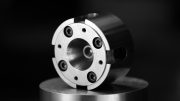
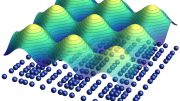


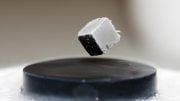
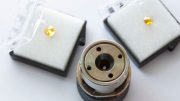

I think the ultimate “holy grail” would be room temperature and room pressure. 39 million psi sounds really, really unpractical. Even 1 million psi would be unpractical.
Good work, but one question:
Is this material stable at standard atmospheric pressure?
If it is, or if it decomposes very slowly, this is a game changer. Otherwise, we have just exchanged difficult-to-maintain low temperatures with impossible pressures!
Isn’t carbonaceous sulfur hydride flammable or maybe even explosive?
Helpful video on search for the holy grail:
https://www.youtube.com/watch?v=PxagJ8fpsv8
Perhaps the “Holy Grail” should have been defined more clearly, to include temperature, pressure and volume. All three parameters need to be at a real-world scale, not just one. This discovery, while no doubt an important advance in science, has only the temperature param within spec, vs. super-cooled superconductors that have two (pressure and volume).
Favorite line of the article: “…finding ways to create the room temperature superconducting materials at lower pressures, so they will be economical to produce in greater volume.” So, closer to 15 psi than 39 million psi? Ok, yeah, that would be good. And larger volume than an inkjet droplet? Sure, that would help too. LOL.
What about using Graphene instead of just plain Carbon? Since Graphene has many unusual Properties and we are constantly finding new things about it…
OMG you just busted this thing wide open.
… a way forward for sure, but still some work to do!…
Great achievement, though…
58 degrees is NOT room temperature, that is low refrigeration, a refrigerator is around 40 degrees. 39 million PSI? The short answer is…superconductors usable at room temp still have not been found. This was like saying we have proven the existence of a supreme being, a friend of a friend just said so and agreed with me!
Good luck on that search and the next trolling the public article.
It isn’t just a matter of finding something that is superconducting at STP, but it needs to have bulk properties that are intrinsically useful for the potential applications. That is, if it is extremely fragile, or cannot be fabricated into large shapes, the range of applications will be severely limited.
Lol 39million psi…. if it needs to stay at that psi good luck finding an application for that. If you lost compression of 39million psi, without doing any research i would imagine it explode probably like a 5000lb+ explosive bomb… but its probably way bigger than even that, 100 psi is dangerous. I can’t even fathom 39million psi.
… with different pressure one can achieve a cup of boiling water at a room temperature, but can one create the tea with that water?
I assume it is time for a molecular level study to produce or discover a material that will superconduct at 80 degrees F and a pressure of 15PSI. Everything in this world is a miracle. Maybe its just a matter of finding the miracle maker and ask for help.
None Shall Pass!